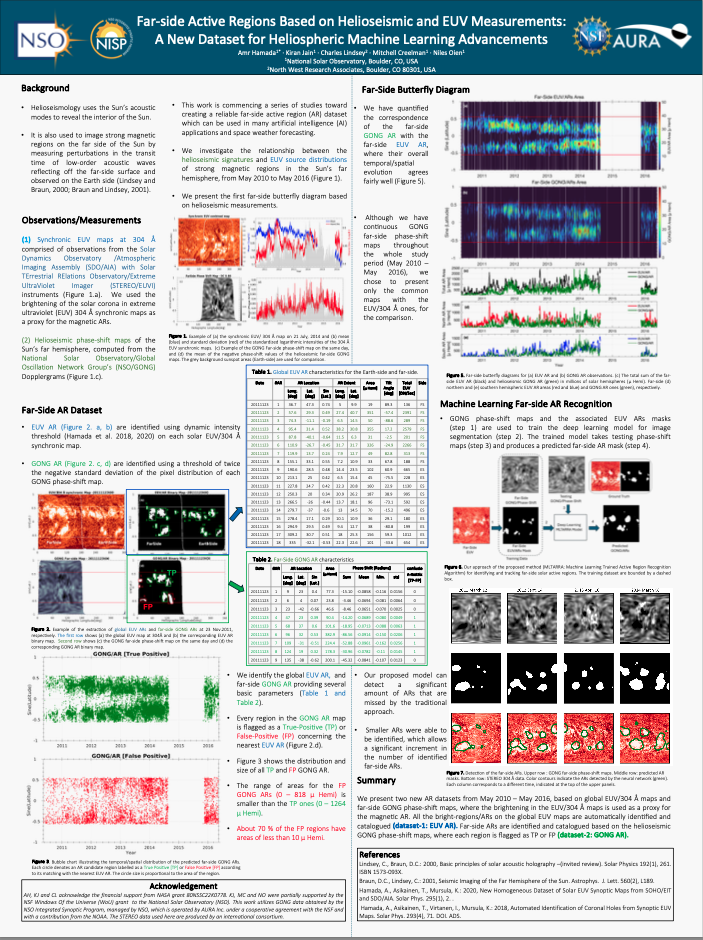Authors: Amr Hamada (National Solar Observatory), Kiran Jain (National Solar Observatory), Charles Lindsey (Northwest Research Associates), Mitchell Creelman (National Solar Observatory), Niles Oien (National Solar Observatory)
Active Regions (ARs) are regions of strong magnetic flux in the solar photosphere. Understanding the global evolution of ARs is crucial for understanding solar magnetism as well as for accurate space weather forecasting. We present the first far-side AR catalog based on extreme ultraviolet (EUV) and helioseismic observations. For the EUV observations, we use synchronic maps at 304 Å comprised of observations from the Solar Dynamics Observatory/Atmospheric Imaging Assembly (SDO/AIA) and the Solar TErrestrial RElations Observatory/Extreme UltraViolet Imager (STEREO/EUVI) instruments. We used the brightening of the solar corona in EUV/304 Å images as a proxy for the ARs. For the far-side helioseismic observations, we used seismic phase-shift maps of the Sun’s far hemisphere, computed from the National Solar Observatory/Global Oscillation Network Group’s (NSO/GONG) Dopplergrams. In this study, we present the first global EUV/AR catalog of the whole Sun, providing several basic parameters: location, area, tilt angle, EUV brightness, and latitudinal/longitudinal extents of the identified ARs. We also present a similar catalog for the far-side GONG/ARs where the helioseismic phase shift parameters are included. Helioseismic far-side GONG/ARs are examined, and their success at predicting strong far-side ARs is assessed. We discuss the temporal/spatial evolution for the global EUV/ARs and far-side GONG/ARs during the maxima of Solar Cycle 24 (May 2010 – May 2016) and examine the correlation between the helioseismic signatures and EUV source distributions of strong ARs in the Sun’s far hemisphere.


